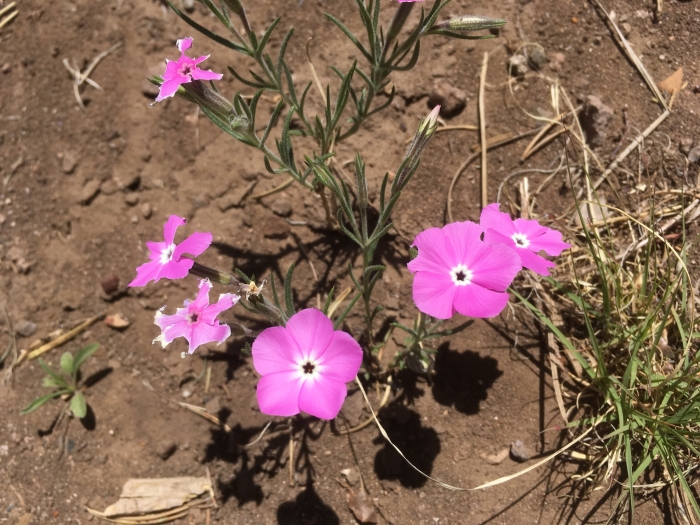Santa Fe Phlox
(Phlox nana)
Santa Fe Phlox (Phlox nana)
/
/

Cecelia Alexander
Public Domain
Image By:
Cecelia Alexander
Recorded By:
Copyright:
Public Domain
Copyright Notice:
Photo by: Cecelia Alexander | License Type: Public Domain | License URL: http://creativecommons.org/publicdomain/zero/1.0/ | Rights Holder: Cecelia Alexander | Publisher: iNaturalist | Date Created: 2018-05-15T18:53:45Z |


















































Estimated Native Range
Summary
Phlox nana, commonly known as Santa Fe Phlox, is a perennial herb that is typically deciduous but can be semi-deciduous in warmer climates. It is native to the open woodlands, rocky slopes, and desert scrub of the Southwestern United States and Northwestern Mexico. This low-growing plant reaches a modest height of 0.2-0.7 feet (0.06-0.2 meters) and spreads to about 0.5 feet (0.15 meters) wide. Santa Fe Phlox is characterized by its mat-forming habit and its vibrant purple and pink flowers that bloom profusely in the spring and early summer, adding a splash of color to the garden.
Santa Fe Phlox is valued for its drought tolerance and its ability to thrive in challenging conditions, making it an excellent choice for rock gardens, xeriscaping, and as a ground cover in dry, sunny areas. It is also used to attract pollinators such as butterflies and hummingbirds. Gardeners appreciate its low water requirements and its adaptability to soils with fast or medium drainage. While it prefers full sun, it can tolerate part shade, especially in hot climates. There are no major disease problems associated with Phlox nana, but it can be susceptible to spider mites and powdery mildew in poor air circulation or overly moist conditions. It is not known to be invasive and is generally well-behaved in the garden setting.CC BY-SA 4.0
Santa Fe Phlox is valued for its drought tolerance and its ability to thrive in challenging conditions, making it an excellent choice for rock gardens, xeriscaping, and as a ground cover in dry, sunny areas. It is also used to attract pollinators such as butterflies and hummingbirds. Gardeners appreciate its low water requirements and its adaptability to soils with fast or medium drainage. While it prefers full sun, it can tolerate part shade, especially in hot climates. There are no major disease problems associated with Phlox nana, but it can be susceptible to spider mites and powdery mildew in poor air circulation or overly moist conditions. It is not known to be invasive and is generally well-behaved in the garden setting.CC BY-SA 4.0
Plant Description
- Plant Type: Herb
- Height: 0.2-0.7 feet
- Width: 0.143-0.5 feet
- Growth Rate: Moderate
- Flower Color: Purple, Pink
- Flowering Season: Spring, Summer
- Leaf Retention: Deciduous
Growth Requirements
- Sun: Full Sun, Part Shade
- Water: Low
- Drainage: Fast, Medium
Common Uses
Bee Garden, Bird Garden, Border Plant, Butterfly Garden, Fragrant, Groundcover, Hummingbird Garden, Low Maintenance, Showy Flowers
Natural Habitat
Native to open woodlands, rocky slopes, and desert scrub of the Southwestern United States and Northwestern Mexico
Other Names
Common Names: Perfect Pink Santa Fe Phlox, White-Eyed Phlox, Canyon Phlox
Scientific Names: , Phlox nana, Phlox nana subsp. nana, Phlox nana var. alborosea, Phlox nana var. lutea, Phlox nana var. purpurea, Phlox nana f. oculata, Armeria nana, Phlox brevistylis, Phlox nana f. lilacina
GBIF Accepted Name: Phlox nana Nutt.